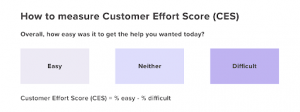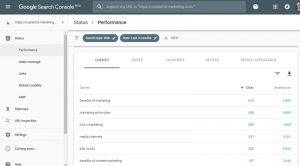Google’s ads have changed at least 10 times in the past decade, so it comes as no surprise that most users cannot identify which results on a SERP are paid advertisements and which are organic results. Google ads have changed from having background shading to a white background with only a small tag labeling it as an ad. They moved from a separate, ad-only box on the right side of the page to the top of the list of results – appearing to the unsuspecting searcher as an organic result to their query. This is native advertising.
As time goes on, the recognizability trend isn’t getting better. A study done in April 2016 by Ofcom, the UK’s communications regulator, showed that 51 percent of adults were not able to identify which results on the page were ads. A few months later, the study was recreated, only to find that 55 percent of internet users could not identify the paid results.
Younger consumers were better than older people at identifying the native ads, but just barely. A seven percent difference separated 18- to 24-year-olds and 45- to 54-year-olds, showing that even those who grew up with the internet aren’t immune to ad blindness.
The problem wasn’t just that users couldn’t tell what was paid for – it was that they didn’t know what was paid for and what wasn’t. Many thought the paid ads showed up at the top of the list because they were the most accurate results, or because they were both paid for and the most accurate. This stems from an overarching fact that in many cases ads aren’t labeled as explicitly as they should be.
Outside of Google, the Online Trust Alliance studied 100 websites, the majority of which had native advertising on them, and found that almost three-quarters of ads on those sites failed to clearly distinguish themselves from other content. While blending in is the ultimate goal of native advertising, each ad is supposed to be labeled, per FTC standards. Whether it is sponsored editorial content on a website or a result on a Google results page, ads do not feature labels clear enough for all internet users to know what they’re looking at.

Source: Search Engine Land
Google’s ads have changed considerably in appearance over the years, with a number of shading and color variations to separate them from organic results. Over time, however, the colors have become lighter and less obvious until fading to white. Without the shaded box encapsulating the ad, a small label is the only proof that it’s an ad. This year, Google changed the ad label from a contrasting bright yellow to green. The label sits on the same line as the site’s URL, and now that the two elements are the same color, there’s little contrast between the two.
Google introduced this color change in an effort to increase Google’s result page’s uniform look. What appeared to some as a way to hide the ad label was noted by Google as a design decision. Google said the color change had no effect on consumers’ understandings of what is an ad and what is an organic result to their query.
The Federal Trade Commission noticed the ambiguity of ads in search engine result pages (SERPs) in the early 2010s and released a letter to various search engines in 2013. The letter outlined recommendations on how to enhance ad labels so as to not mislead consumers. With the constant evolution that search engines go through as technology advances, the look and feel of the results pages can change, but the transparency cannot, they said.
One of the main points in the FTC’s letter was that clarity and prominence of advertising disclosures are key, because people deserve to know whether they’re looking at editorial content or an ad. They recommended visual cues or text labels as the best ways to make the ads obvious.
This is beyond whether a color change of Google’s ads is noticeable to consumers. In the name of transparency and trust, ads need to distinguish themselves from editorial content. Savvy users and readers can then make their own informed choices about the content they interact with.
Native advertising goes beyond Google. Journalism has turned to native content in hopes of creating a new revenue stream. A study done by FIPP and the Native Advertising Institute reported that of 140 magazines, 68 percent rely on their editorial teams to create native ads. Whether the content is properly labeled as advertising is yet to be seen. Respondents of the survey answered that the biggest threat to native advertising is a lack of separation between editorial and commercial.
Even Forbes understands the need to be transparent when publishing both editorial and marketing content. But while many platforms have turned away readers because of their lack of clarity distinguishing what is what, Forbes has managed to drastically improve its readership numbers.
This just goes to show how important publishers’ transparency is to consumers. It goes beyond whether consumers can identify what is editorial content and what is creatively disguised advertising, it’s about the honesty of a publisher.
Digital & Social Articles on Business 2 Community(58)
Report Post




